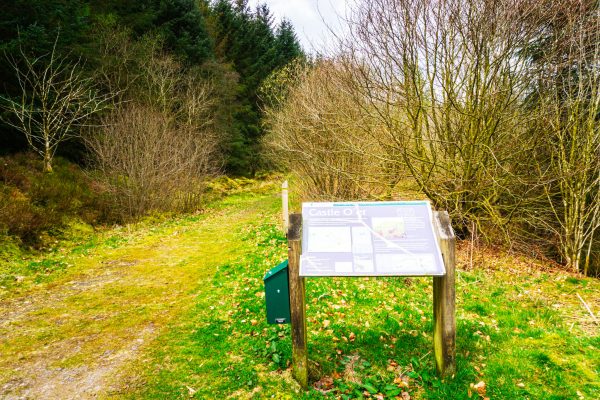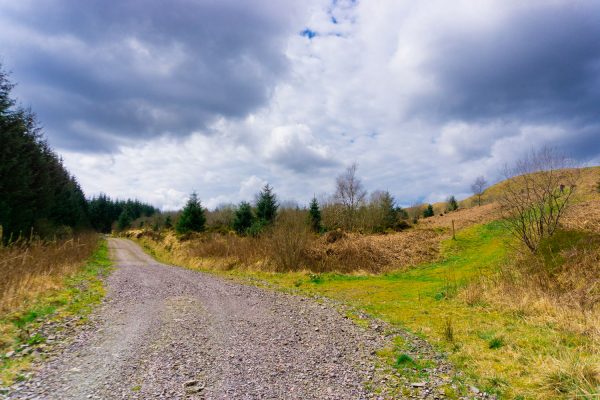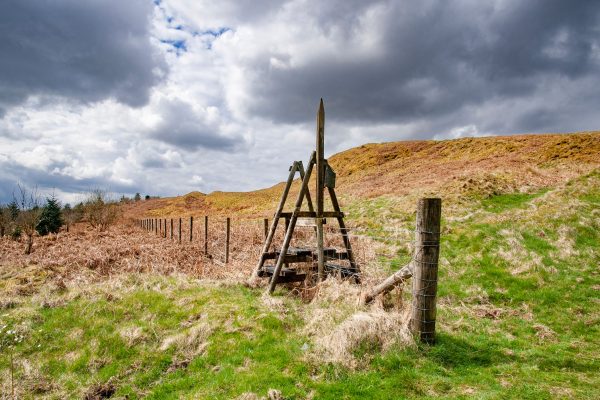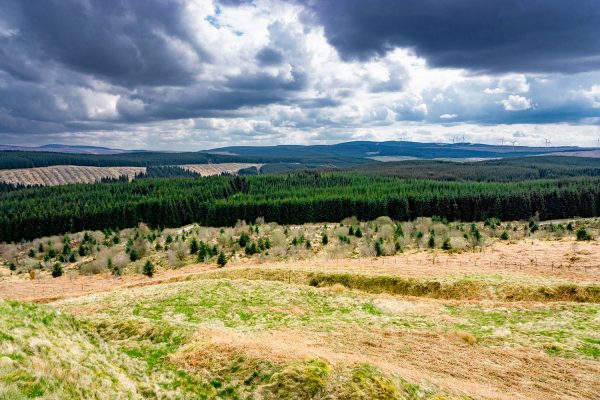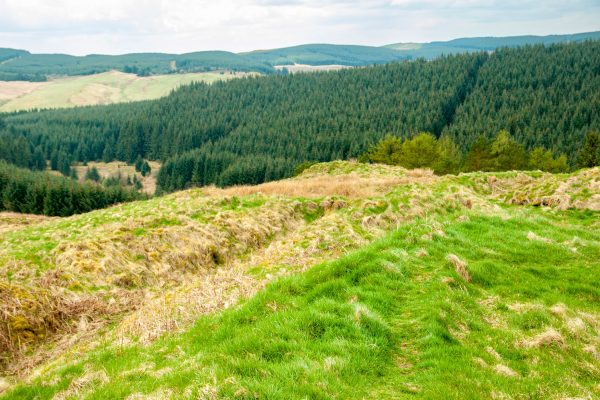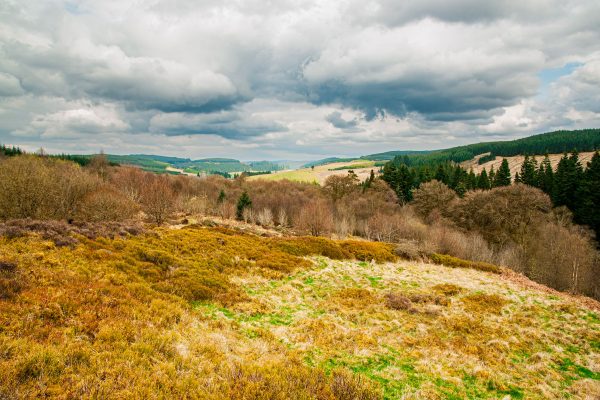Castle O'er Fort
This was the most spectacular of the Esk valley forts. As you climb up to it you can see how well defended it must have been and how impressive to anyone intruding into the valley.
1. Boonies: A Romano-British farmstead
2. Bailiehill: A Magnificent hill citadel
3. The Knowe: A fortlet, farm or fortified croft
4. Castle O’er: The most superb of the Esk Valley hill forts
5. Over Rig: A unique and perplexing site – fascinating but mysterious
6. Bessie’s Hill: A fort and enclosure
7. The Loupin’ Stanes: A small but impressive stone ring
8. The Girdle Stanes: A large stone ring
9. King Schaw’s Grave: A burial kist, once buried under a vast cairn
This was the most spectacular of the Esk Valley forts. As you climb up to it you can see how well-defended it must have been and how impressive to anyone intruding into the valley.
It takes some effort to reach it, but the rewards are great views and the chance to investigate a very impressive site. You’ll probably want to return to this and other sites on the Trail, as the light at different times of the day and in different seasons brings them out in various ways.
As you make your way up the well-defined path, over the stile with a nearby interpretation board, you come first to the imposing outer earthworks. The path leads on up to the east entrance through a further, inner rampart. The whole could give the impression of a short, intensive, well-planned, construction designed for protective purposes. In fact, the fort had a long life and was developed through several phases, which can be viewed best once you’ve reached the top of the hill.
As you approach the top you see two and here and there three separate ramparts, which in places are cut into the bedrock. It’s likely that in the early period of the site, none of these existed, and that there were only huts surrounded perhaps by a palisade.
On the hilltop, it is suggested that the innermost ramparts on the edge of the summit (II) were later insertions inside the earlier ramparts, which were downhill from them. (IA, IB). This, in the form of a thick stone wall, gave defenders a smaller perimeter to defend against attack, and better natural advantages. The imposing entrance fortifications to the southwest also belong to a later stage.
Having reached the top, look first at the circular “footprints” of the dwellings. They are huts (round houses), apparently lined up along a ‘street’, but be wary of assuming that all of them were lived in at the same time; in fact, their footprints overlap. You can check by pacing that some were about 10m in diameter.
Much later the outlying annexe (defined by earthworks C) was added to the settlement. These formed a boundary rather than a defensive wall, possibly for herding and containing livestock. The site plan also indicates that the fort is at the centre of a mysterious system of linear depressions with earthworks beside them. It is thought that these might have been to aid the herdsmen as they drove their cattle and sheep up towards the settlement.
Excavations
Richard Bell, the landowner, excavated here in the 1890s, and Roger Mercer of the RCAHMS in 1985.The site plan is based on Dr Mercer’s findings and is reproduced by kind permission of RCAHMS. At excavation, neither found much in the way of artefacts but there are in Dumfries Museum finds from the Castle O’er area, including seven melon beads, several paste and jet beads and discs, part of a glass finger-ring, a flint blade, a bead of Antrim bauxite, and a number of Iron Age spindle whorls.
Material from the outer ditches of the site gave a carbon dating of 50 AD +/- 100 years, but this was probably from a late period in the life of the site, when timber roundhouses were built across the now-ruined ramparts.
A possible life history for the site might start with a minimally defended hilltop farming settlement. As time passed, perhaps over a couple of centuries, the region’s population grew and land hunger increased so that it became more and more necessary to build defences to maintain possession of the site.
Later, as the well-defended seat of a powerful cattle-rearing clan, with outposts at the Knowe and Bessie’s Hill, it was probably left severely alone by the Romans during their occupation.
The scarcity of artefacts supports the tentative suggestion that in the last period of use of the site, it became a sheiling where people lived seasonally according to the grazing needs of their flocks or herds. Taking along their scanty goods and chattels, they would move their animals along when nearby grazing was exhausted, to return later when the pastures had regrown.


